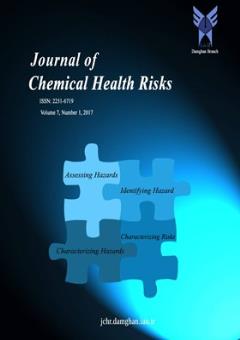Antimicrobial and Hydrophilic Behavior of Soluble Soy Polysaccharide Starch/Cold Water Fish Gelatin Films Incorporated with Nano-Titanium Dioxide
محورهای موضوعی :
Neda Fallah
1
,
Narmin Nabeghvatan
2
![]() ,
Tahereh Sadeghi
3
,
Anna Etemadi Razlighi
4
,
Tahereh Sadeghi
3
,
Anna Etemadi Razlighi
4
![]() ,
Mohammad Mehdi Marvizadeh
5
,
Abdorreza Mohammadi Nafchi
6
,
Mohammad Mehdi Marvizadeh
5
,
Abdorreza Mohammadi Nafchi
6
1 - Department of Food Science and Technology, Qom Branch, Islamic Azad University, Qom, Iran
2 - Department of Food Science and Technology, Faculty of Agriculture, University of Tabriz, Tabriz P.O. Box 51666-16471, Iran
3 - Department of Food Science and Technology, Science and Research Branch, Islamic Azad University, Tehran, Iran
4 - Departmant of Food Science and Technology, Quchan Branch, Islamic Azad University, Quchan, Iran
5 - Young Researchers and Elite Club, Damghan Branch, Islamic Azad University, Damghan, Semnan, Iran
6 - Food Technology Division, School of Industrial Technology, Universiti Sains Malaysia, Penang, Malaysia
کلید واژه: Nanoparticle, Edible film, Physicochemical properties, Solubility, Bionanocomposite film,
چکیده مقاله :
Edible films based on starch are applied for food protection to extend shelf-life of food products. The biodegradability of film compounds was significantly improved by the utilization of biopolymer molecules in comparison to petroleum packaging, and it could be a replacement for synthetic packaging. In the presentation work, the effects of nano titanium dioxide (TiO2-N) were studied on the moisture content, water solubility, moisture uptake, and antimicrobial properties of soluble soy polysaccharide (SSPS) starch/cold water fish gelatin films. The nano titanium dioxide was incorporated into the SSPS starch/cold water fish gelatin dispersion at various levels (1, 2, 3, and 5 w/w% based on SSPS starch). The moisture content of the biofilms decreased from 14.12% to 12.28% and water solubility decreased from 93.18% to 71.46% by the incorporation of 5% TiO2-N into the biopolymer matrix. Increasing TiO2-N from 0 to 5% decreased the moisture uptake, a value of 9.83–6.81 g/g dried film. According to an increased inhibition zone of 1-5% TiO2-N for Staphylococcus aureus and Escherichia coli from 32.44 to 62.27 mm2 and from 22.15 to 45.17 mm2 respectively, SSPS starch/cold water fish gelatin/TiO2-N films showed antimicrobial characterizations against Staphylococcus aureus and Escherichia coli. In summary, TiO2-N improves the functional properties of SSPS/cold water fish gelatin biofilms and can be applied in the food industry.
Edible films based on starch are applied for food protection to extend shelf-life of food products. The biodegradability of film compounds was significantly improved by the utilization of biopolymer molecules in comparison to petroleum packaging, and it could be a replacement for synthetic packaging. In the presentation work, the effects of nano titanium dioxide (TiO2-N) were studied on the moisture content, water solubility, moisture uptake, and antimicrobial properties of soluble soy polysaccharide (SSPS) starch/cold water fish gelatin films. The nano titanium dioxide was incorporated into the SSPS starch/cold water fish gelatin dispersion at various levels (1, 2, 3, and 5 w/w% based on SSPS starch). The moisture content of the biofilms decreased from 14.12% to 12.28% and water solubility decreased from 93.18% to 71.46% by the incorporation of 5% TiO2-N into the biopolymer matrix. Increasing TiO2-N from 0 to 5% decreased the moisture uptake, a value of 9.83–6.81 g/g dried film. According to an increased inhibition zone of 1-5% TiO2-N for Staphylococcus aureus and Escherichia coli from 32.44 to 62.27 mm2 and from 22.15 to 45.17 mm2 respectively, SSPS starch/cold water fish gelatin/TiO2-N films showed antimicrobial characterizations against Staphylococcus aureus and Escherichia coli. In summary, TiO2-N improves the functional properties of SSPS/cold water fish gelatin biofilms and can be applied in the food industry.


